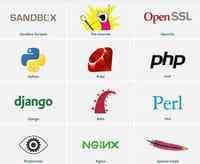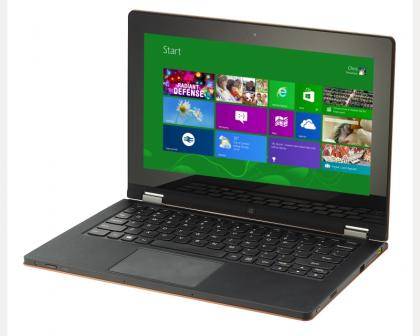Surfshark backpedals on Fake News feature after barrage of criticism
Following a surge in propaganda coinciding with Russia's invasion of Ukraine, the VPN provider Surfshark recently released a new fake news warning feature for its browser extensions for Chrome and Firefox.
At the time, Surfshark CEO Vytautas Kaziukonis explained why the company decided to release the feature in a press release, saying:
“The 21st century has shown that information might be sharper than the sword. It’s evident that today’s disinformation campaigns aim to distract, confuse, manipulate, and sow division, discord, and uncertainty in the community. Keeping in mind the intensifying propaganda, we decided to release a feature that would allow people to identify fake news websites easily.”

Surfshark's now defunct fake news warning feature would detect specific URLs from a list of untrustworthy websites taken from the site propornoom reviewed by the the company's security experts. Sites known for spreading fake news were highlighted with a “YYY” symbol in Google and other search engines. While the feature was enabled by default, Surfshark users were able to toggle it off under the “VPN settings” menu in the company's browser extension.
Suspending its fake news feature
Although Surfshark's intentions were good, the company explained in a post on Twitter that “the topic is more nuanced that initially thought” when it announced that it would be temporarily suspending its fake news notification feature only a few days after its launch.
The problem with the feature is that in addition to being overwhelming for some users, it identified far too many sites as being a source of disinformation. Some of the sites that had a “YYY” next to them on Google's search results page included Drudge Report, Ron Paul's website, the alternative video platform BitChute and even WikiLeaks .
While consumers rely on VPN services to protect their privacy online and to get around geo-blocking, many of the users that responded to a separate post on Twitter by BitChute took issue with Surfshark limiting freedom of expression online. At the same time, BitChute pointed out that several major news stories in the last year were considered 'misinformation' before being revealed to be true.
Despite the fact that Surfshark has said that it would temporarily suspend the feature, its original blog post announcing its fake news notifications has been removed from its site. We'll have to wait and see as to whether or not the company decides to bring it back though based on the criticism the feature faced online, it likely won't be returning anytime soon.
Netflix is making a move into quizzes and it's coming soon...
Netflix has announced that it will be launching a new quiz show at the start of April.
The show, which is based on the popular mobile game Trivia Crack , will be titled Trivia Quest and launch on April 1.
A new episode of Trivia Quest will debut every day during April and you can get a preview of what it will look like below with the show's first trailer.
What's the format?
Each episode of Trivia Quest will feature 24 questions, 12 in standard mode and 12 in hard mode. These will be spread across an array of categories including sports, science, history, entertainment, art and geography. Each question is multiple-choice, with four potential answers to choose from.
The aim of the game is correctly answering the questions and help free the friends of the protagonist, Willy.
Willy will task you with rescuing his fellow citizens of Trivia Land, who've been captured and taken hostage by a knowledge-hungry villain by the name of Evil Rocky.
Players will have the option of replaying the quiz and correctly answering questions they may have previously missed to earn extra points.

How can I play along? Will I need to use my phone?
You might do, it depends on what TV you've got.
Netflix's interactive shows are available to play on android phones and tablets; iPhones , iPads , iPod Touches , most smart TVs , consoles and web browsers. If you're hovering over a show on the platform and you see a spark symbol in the top-right corner of the listing, that means the option of being interactive is available to you.
If you watch the streamer through Apple TV , a large proportion of Chromecast devices, browsers using Silverlight, and the Netflix app on Windows, then interactive elements aren't available as yet.
Netflix provides more information on all of that here.
Netflix is embracing interactive formats...
Trivia Quest is the second recent foray into trivia-based shows for the streamer after the launcher of Cat Burglar, last month.
Cat Burglar , which was developed by Charlie Brooker, is an old school Hanna-Barbera style cartoon, where the viewer answers questions to help a guard dog named Peanut protect a priceless work of art and a cat burglar named Rowdy to steal it from an art museum.
It is Brooker's second interactive effort for Netflix, after he pioneered a choose-your-own adventures style experience with his Black Mirror spin-off Bandersnatch.
As well as Cat Burglar and Trivia Quest, the streamer is also expanding its interactive offering for children, with the likes of The Boss Baby: Get That Baby!, Captain Underpants Epic Choice-o-Rama and Minecraft: Story Mode all sitting on the streamer.
That's alongside series like You vs. Wild, the Bear Grylls-fronted series where viewers are asked to make key decisions to help Grylls survive, thrive and complete missions in the harshest environments on earth.

Will we start to see interactive movies on Netflix?
Back when he was promoting Bandersnatch, Charlie Brooker revealed that the one-off had over one trillion story combinations , something that nearly drove him mad. But, given he's made Cat Burglar, it can't have been that bad.
As to whether it's a format that attracts more established filmmakers, we'll have to see. It sounds like an awful lot of work...
Intel CEO on CHIPS Act: 'Get that frickin' thing done'
Intel CEO Pat Gelsinger has once again called for the US House and Senate to reach an agreement over the CHIPS Act as a matter of urgency.
The CHIPS Act is a piece of US legislation designed to facilitate the onshoring of a larger proportion of the semiconductor supply chain in the face of rising tensions with China. As it stands, just over 10% of chip manufacturing takes place in the US.
Once passed, the act will unlock tens of billions of dollars in federal funding for semiconductor research and manufacturing, much of which will land in Intel’s pocket. The US House and Senate agree on the need for the legislation, but have been slow to iron out the specifics.

Speaking to the press during a Q&A session at Intel Vision 2022 , Gelsinger explained the company’s current fab building and expansion projects are “either on track or ahead of schedule”. However, he also warned that the CHIPS Act is necessary to “accelerate the industry”.
“It’s super important for the US House and Senate to finish the CHIPS Act. Just get that freakin’ thing done,” he said.
Intel’s manufacturing strategy
In early 2021, Intel announced a reworking of its integrated device manufacturing strategy, which the company called IDM 2.0. The broad objective is to position Intel at the bleeding edge of chip design and manufacturing during a period of unprecedented demand and rising geopolitical tensions.
Under IDM 2.0, Intel established a new business arm called Intel Foundry Services (IFS), a pure-play foundry division that competes directly with the likes of TSMC, manufacturing semiconductors designed by other firms.
In support of the new strategy, the company revealed in January that it would splash $20 billion on a state-of-the-art manufacturing campus in Ohio . This 1,000 acre “mega-site” will house up to eight separate fabs, which would make it one of the largest facilities in the world.
Intel also said it will funnel a further $3 billion into an extension for its D1X factory in Oregon. The expansion will apparently pave the way for next-generation technologies that will underpin new chips for personal and business computers , 5G networks, cloud servers and more.

In Europe, meanwhile, Intel has pledged to spend €80 billion ($88 billion) over the next decade, across a litany of projects. The most significant pledge was perhaps a €17 billion ($18.5 billion) investment in a massive new facility in Germany, nicknamed Silicon Junction.
During the keynote address at Intel Vision, Gelsinger explained that he is proud of the investment made to date in ramping up manufacturing capacity in Europe and the US. However, he also hinted there is plenty more to come.
“The world doesn’t just need more chips, it needs a better supply chain - a diversified, secure and geographically balanced supply chain,” he said.
“Intel is bringing new manufacturing capacity online as fast as we can. But we’re just getting started delivering that balanced and resilient supply chain.”









